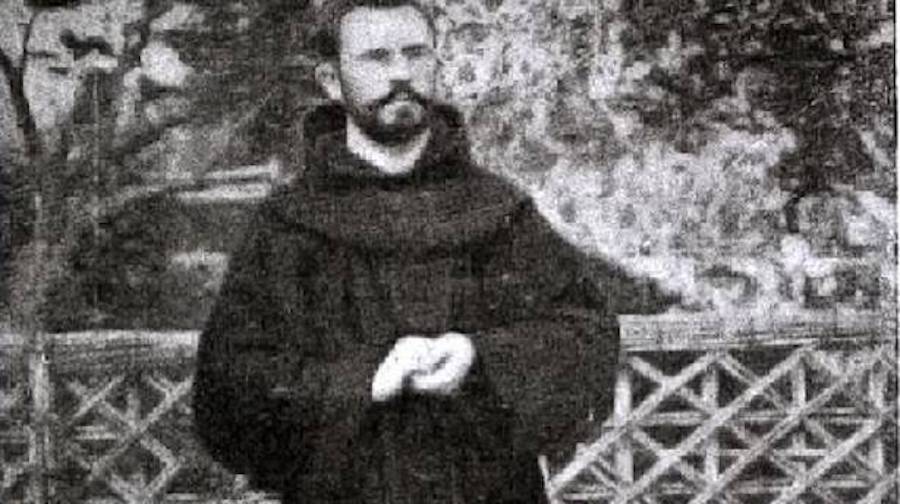This article was translated by John R. Bopp
The land of Rif, where the Riffians live, in modern-day Morocco, is a land of sad memories for the Basques, as it was one of the places the peninsular Basque draftees were forced to serve after obligatory military service was reinstated following the last Carlist war. It was a gift from the liberal Basques and Spaniards to make thousands of our young men die in the unsuccessful attempts by Spain to stop, with weapons, the independence movements in Cuba and the Philippines. Well, only if you were poor: the wealthy were exempt, because if you someone needed to die, there were always the poor and those who had fought the imposition of liberalism in Basque lands.
Those young Basques never accepted conscription enthusiastically, on either side of the Pyrenees, which helps us understand the bloody migrations Basque society led in the 19th and early 20th centuries. Historian Carlos Larrinaga has an excellent explanation here.
This obligatory military service, as we said, meant many Basques had to participate in the occupation of that part of Africa in the early 20th century, including Riffian lands. That occupation brought along a war, called the Rif War, and that meant the deaths of tens of thousands of people.
What those Basques being led to their deaths could not have imagined is that they were taking the same path a Basque man from Garai, Biscay, had taken just a few years earlier. Pedro Hilarión Sarrionandia Linaza went to the north of Africa in 1892 as a Franciscan monk, and was stationed in a convent in Tétouan, where he was tasked with studying Arabic in the language school founded by another Basque, Father José María Lertxundi, a renowned Arabist from Orio.
In addition to studying Arabic, our protagonist from Garai also studied Riffian, or Tmaziɣt. And that was quite a challenge, as the language lived in the shadow of Arabic, and hardly any texts had been published, which meant that in order to learn it, he had to have direct contact with its speakers. The path Hilarión had to take was to learn it straight from the Berbers.
And he managed to reach a high enough level in the language that he ended up describing it in a grammar, the first one being published in 1905. He also wrote a Spanish-Riffian dictionary.
Unfortunately, our protagonist died very young, at just 48, leaving behind his finished but unpublished works, including the dictionary. And that allowed one Esteban Ibáñez to steal his work and attribute it to himself, even going so far as to burn many of Hilarión’s writings which related Basque and Riffian.
The story of the first grammar in Riffian was told to us by journalist Latifa Babas in an English-language article on the Moroccan news site Yabiladi (which we’ve cited before).
The complete story, including the plagiarism and theft of the Basque researcher’s work, we discovered in a 2013 article by Jon Irazabal Agirre, in the “History of the Basques” section at Deia, and also in an article by Goio Bañales, on the Somorrostro website.
Yabiladi – 17/11/2017 – Marruecos
History : The first grammar book for Riffian Tamazight was written by a Spanish missionary
By the end of the 19th century, Spanish religious men in Morocco started to show interest in learning the Amazigh language, especially in the Rif region. The best example in this case is Pedro Hilarion Sarrionandia, a Franciscan priest who traveled to Morocco in an African mission. During his twenty-year stay in the Kingdom, he wrote a grammatical book for the Riffian language and a Spanish-Riffian dictionary.
(Continue) (Automatic Translation)
Deia – 17/8/2013 – Euskadi
Historia de los vascos: Pedro Hilarión Sarrionandia: el bereber de Garai
PEDRO Hilarión Sarrionandia Linaza nació el 22 de octubre de 1865 en el caserío Barrenkuatze de Garai. Era el hijo mayor de Juan Martín Sarrionandia, natural de Garai, y de Venancia Linaza Ereño, natural de Lemoa. Tras él vendrían cinco hermanos más: Rufina, Damiana, José Martín, María Matea y Francisco.
(Continue) (Automatic Translation)
Somorrostro – 20/12/2008 – Euskadi
PEDRO HILARIÓN DE SARRIONAINDIA, HITZKUNTZALARIA
En la Biblioteca Foral de Bizkaia se halla un curiosísimo libro, que fue escrito por el misionero bizkaitarra fray Pedro Hilarión de Sarrionaindia, uno de los arabistas europeos más notables. Su título es “Noticia sobre la lengua que se habla en el Rif, lengua aborigen de todo el Norte de Africa“.
(Continue) (Automatic Translation)
Last Updated on Oct 22, 2021 by About Basque Country





























